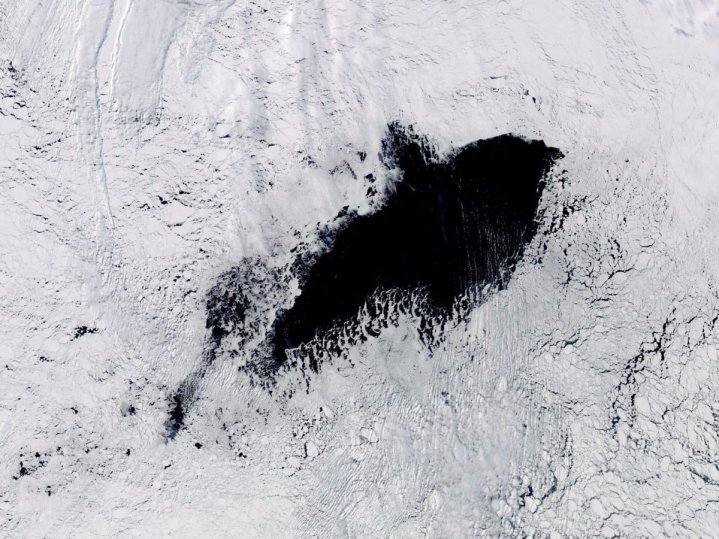
In a rather mysterious development, scientists have spotted a massive hole in the middle of the frozen Weddell Sea of Antarctica. While this phenomenon is quite common in the Arctic and Antarctic regions, this particular one is without any reason or rationale behind its origin.
Known as polynyas or semipermanent area of open water in sea ice, this Weddell polynya is quite mysterious in terms of its origin. Intriguingly, this polynya is located extremely far from the sea ice coastline, where these kinds of openings usually appear. Also, despite being exposed to freezing chilly winds during the last month, this polynya has continued to persist, which means whatever force caused the hole to form is strong enough to keep it from refreezing.
Also, despite being exposed to freezing chilly winds during the last month, this polynya has continued to persist, which means whatever force caused the hole to form is strong enough to keep it from refreezing.
However, this is not the first time that this particular hole has emerged in Antarctica. According to NASA Earth Observatory, scientists had observed a similar polynya and that too in the same area in 1974. The hole had again reappeared during the austral winters of 1975 and 1976. After that, it disappeared and didn't re-emerge for decades. The polynya re-emerged at the same point in Antarctica again in August 2016, significantly smaller in size than what it was in the 1970s.
Now it's back and this year it appears bigger than last year. As per the report, the largest estimates of the hole's current size put it around 80,000 square kilometers. Still, it's far smaller than its 1970s version, which had reached 300,000 square kilometers.
Although it's safe to assume that this massive hole in sea ice is connected to the climate change, however, that may not be the case. Experts believe that the Weddell polynya might a part of some cyclical process but they lack clear details.
"Why was the Weddell polynya present in the 1970s, and then absent until its recent reappearance? Did the Weddell polynya occur before 1970, and we are looking at a periodic process that shows itself about every 40 years? If there were earlier occurrences, there is no record of them," said Willy Weeks, a retired sea ice geophysicist from the University of Alaska in Fairbanks, while commenting at the time of the polynya's re-emergence in 2016.
A polynya allows heat to escape the ocean, cooling the top layer of the sea water. As that water becomes colder and denser, it sinks and thus allows more warm water to rise above and keep the hole open. According to NASA, that sinking water contributes to the cold water mass, known as Antarctic Bottom Water, which feeds into deep ocean currents and contributes to ocean circulation around the globe.
One of the biggest reason as to why this polynya remains so mysterious is that it's quite difficult to explore such areas. Winter air temperatures are thought to be about negative 20 degrees Celsius there and very few flights or expeditions take place in Antarctica during the winter months.
Also Read: NASA astronauts fix 'new eyes' to International Space Station, why?
However, this time around scientists might have a better chance of knowing what's happening, thanks to a key new source of data from a National Science Foundation-sponsored group studying climate in the Southern Ocean. A robotic float, which was sent there for transmitting data from the Weddell Sea surprisingly surfaced inside the polynya last month, stated a news release from the Southern Ocean Carbon and Climate Observations and Modeling project at Princeton.
That robot has already begun sending the data, which is being processed by the scientists. The information could very well expose what triggers the formation of these mysterious holes.









